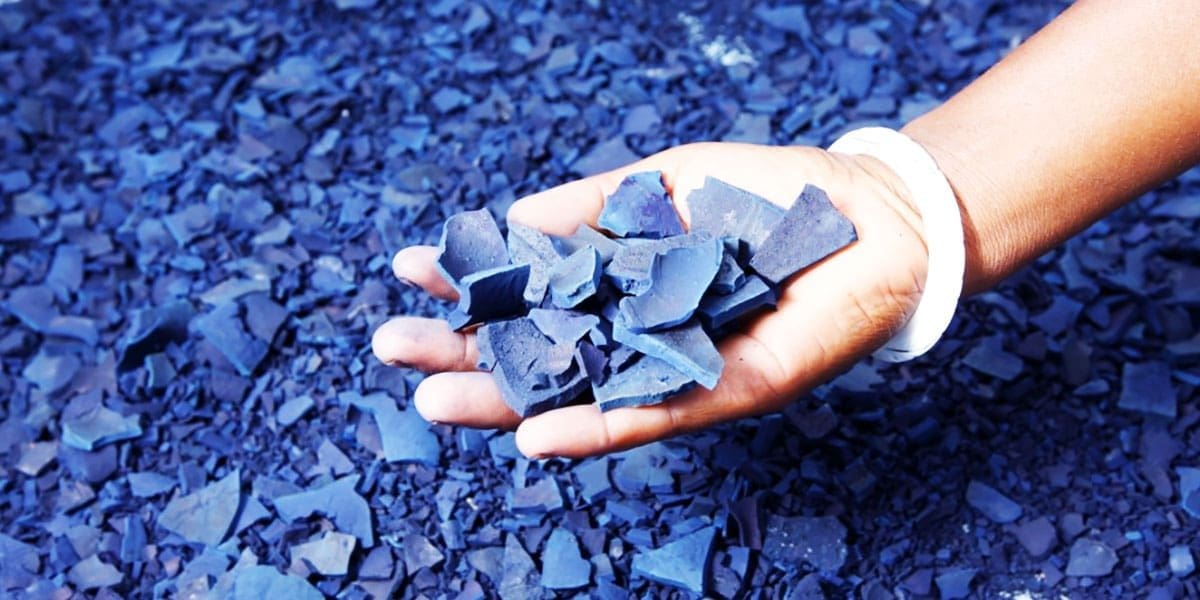THE INDIGO DYEING PROCESS
Dyeing with Natural Indigo is happening in India since ancient times to produce blue color on natural fibres. The majority of natural dyes need treatment with metal salt either before or after dyeing/printing operations. Indigo is applied in the absence of mordant producing blue shades with good fastness properties.
The natural indigo dye is extracted from the leaves of the indigo plants. The species of the plant cultivated in India is known as Indigofera tinctoria.
Indigo is insoluble in water and belongs to the vat dye class. Before dyeing with natural indigo, it must be converted into a water-soluble form by the process known as a reduction in presence of alkali. The dyeing is carried out while indigo is the water-soluble reduced form. After dyeing with natural indigo, the fabric is exposed to air during which the water-soluble form of indigo gets converted into the original water-insoluble form producing blue color on the dyed fabric.
water-soluble form by the process known as a reduction in presence of alkali. The dyeing is carried out while indigo is the water-soluble reduced form. After dyeing with natural indigo, the fabric is exposed to air during which the water-soluble form of indigo gets converted into the original water-insoluble form producing blue color on the dyed fabric.
In ancient times the reduction process was carried out in wooden vats, therefore, this class of dye is known as vat dyes.
Indigo has a poor affinity to cotton, wool, or silk. Therefore, deep blue shade on the fabric is produced only after repeated dyeing. For this purpose, the fabric to be dyed is dipped in the reduced indigo solution, squeezed, and exposed to air. The procedure of dipping into reduced indigo solution, squeezing, and exposure to air is repeated several times (6-10 times) to get a deep blue shade. The larger the number of dips, the deeper will be the blue color on the fabric.
Step wise process :
- Fabric Wash: The fabric to be printed is washed free of starch and dust from the fabric. This process involves the fabric being soaked in water for a day and for another two days in a mixture of castor oil & water. It is then bundled and kept soaking in the solution for another 24 hours. The fabric is then washed in clear water for two continuous days to remove all traces of the castor oil. The fabric is now ready for dyeing & printing to start.

- Block Print: The Dabu paste is printed on fabric with the help of a wooden block. A skilled printer is essential to get satisfactory prints.

- Spraying of sawdust: Sawdust is then sprinkled manually on the wet Dabu print and left for few hours for drying. Good drying is essential otherwise the print may be removed during dyeing operation with the loss of resist effect.

- Dyeing: After printing and drying the fabric is then dyed in the cold dye solution. Indigo dyeing is quite common. This would produce a white print effect against a blue background.

The Dabu printing and dyeing processes are repeated until the desired design is obtained. There are several variations of Dabu printing depending on the design. However, the basic principles remain the same.


Eco Clothing India is dedicated to preserving and celebrating this craft and the rich Indian design heritage. Welcome timeless style into your wardrobe — explore our range of Indigo hand block printed Kurtas, Pants Dupattas, Shirts, and more.

